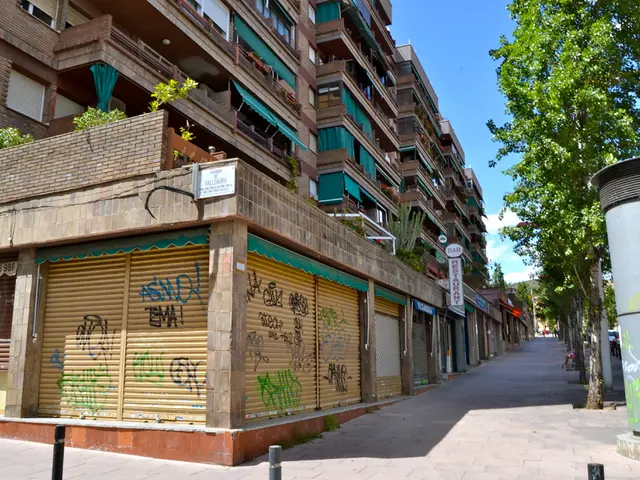Renovations completed on Arco da Vila
In the heart of Faro, Portugal, stands a monument of significant historical and cultural importance - the Arco da Vila. Commissioned in 1812, the neoclassical arch was built on the site of the former Arab Gate, serving as a connection between the medieval and contemporary parts of the city [1][3].
The Arco da Vila, a National Monument since 1910, is more than just a historical landmark. It functions as a literal and symbolic hinge, connecting Faro’s rich past with the present, and marking the doorway into the Old Town. As a crucial passage for visitors exploring Faro’s heritage, it leads towards landmarks like Largo da Sé, the main square with its cathedral and orange trees, and forms part of the characteristic pedestrianized historic core with cobbled streets and preserved 18th-century architecture [1][2][3].
Recently, the Arco da Vila underwent a restoration project, funded by an agreement between the municipality and the Cultural Heritage Safeguarding Fund, under the Recovery and Resilience Plan, with a total investment of 250,000 euros [1]. The renovation aimed to maintain the arch’s integrity as a vital historic monument for both locals and tourists, ensuring it continues to serve as a revered gateway and symbol of Faro’s identity and continuity between its historical roots and contemporary life [1].
The inauguration ceremony was attended by the Mayor of Faro, Rogério Bacalhau Coelho, and the Minister of Culture, Margarida Balseiro Lopes. Both officials emphasized the importance of the Arco da Vila to Faro's identity and its role as a metaphor for Faro's cultural policy, encouraging transformation and development [2]. Margarida Balseiro Lopes considered the Arco da Vila as a "gateway" that enhances sustainable tourism and regional self-esteem [2].
Rogério Bacalhau also highlighted that culture should be transformed into an economic and social engine, and that integrated management policies demonstrate that culture is the project of the future [2]. The Mayor and the Minister of Culture unveiled an inaugural plaque, symbolizing the completion of the project and the Arco da Vila's continued role as a significant asset and a driver of development [2].
The restoration work was led by architect Teresa Valente, who headed a multidisciplinary team. Teresa gave a review of the work progress, discussing the before and after of the rehabilitation’s impact [2]. The Arco da Vila, with its restored splendour, stands as an unavoidable symbol of Faro’s life, embodying the desire to transform each stone of history into a living force for development [2].
In conclusion, the Arco da Vila is a testament to Faro’s layered history, cultural heritage, and ongoing commitment to preserving its architectural treasures. It serves as a gateway to the past, a symbol of identity, and a beacon of sustainable development, making it an essential landmark in Faro.
[1] Faro Municipal Council [2] Ministry of Culture [3] National Institute of Cultural Heritage
The Arco da Vila, with its restored grandeur, has become a symbol of the Algarve region's lifestyle, drawing tourists from around the world to experience its historical charm and enjoy its preserved 18th-century architecture, transforming home-and-garden shops in the Old Town into popular destinations.
The renovation project, funded in part by the Cultural Heritage Safeguarding Fund, not only secures the Arco da Vila as a revered gateway to Faro's past and present but also emphasizes the importance of tourism as a driver for the region's economic and social development, echoing the Mayor's call for culture to be an economic and social engine for the future.




